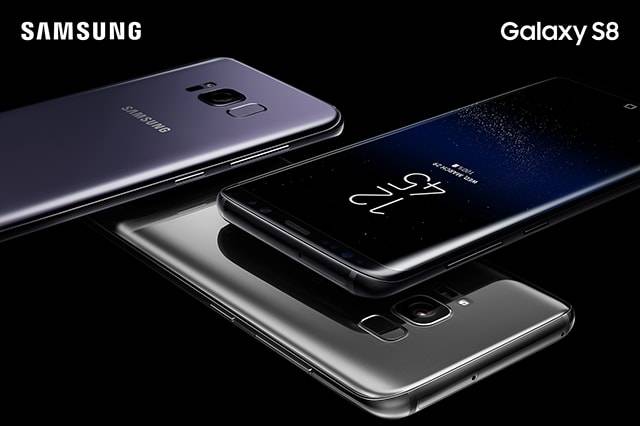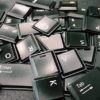The Samsung Galaxy S8 is finally here and it is everything we’ve raved about and more. It certainly impressed us, but is it enough to make us forget about the Galaxy Note 7 fiasco?
Design
Right from the get-go, the S8 is a well-made phone that’s sure to turn heads. To put it simply, the phone is stunning.
It’s made with a fusion of glass and metal and feels great in the hand. Its colours—bluish gray, dark black, and bright silver—are subtle, too. Made with precision and sturdiness, you’ll find it unbelievable the Galaxy S8 is this light and thin. Not to mention that it is IP68 dust-and-water-resistant so it can readily withstand the depths of 1.5 meters for 30 minutes.
On top of these design features, the first thing you’ll notice with the S8 is its Infinity display. Despite the screen taking up most of the front space, we didn’t have any accidental taps while holding the device. A lot smart coding has clearly been put into it. The S8 also got rid of the home button, replacing it with a pressure-sensitive button at the phone’s bottom.
Because of its glass component, Samsung Galaxy S8 also tends to show a lot of fingerprints. It reflects a lot more light on the sides of the screen, too. The fingerprint scanner has been placed in an awkward position at the back, so you’d fear to smudge the camera whenever using the feature. Although, to be honest, these are really small trade-offs.
Overall, everything about the S8’s appearance rolls attractively together.
Camera
Samsung Galaxy S8’s camera didn’t get any major upgrade from the S7. It isn’t a downgrade, though, and the shots are still top of the line. Perhaps some internal tweaks or software improvements were made, but more tests will have to be done to see them.
Despite the lack of changes in this department, the S8 still has one of the best cameras on any smartphone today. On the back is a 12MP sensor and it delivers great low-light performance and speedy snaps. Samsung even added a feature called multi-frame image, which takes three pictures and picks one with the sharpest quality. In front of the Galaxy S8 is an 8MP camera that has been boosted by a fun effects button to give yourself a variety of entertaining augmented reality makeovers, similar to Snapchat.
Of course, the S8 comes with the same impressive modes and options like its Auto Mode and the Professional Mode. The former still manages to pick out a great picture nearly every time you take a picture and the latter gives you the chance to really tweak the camera’s settings (or shoot in a raw format).
Battery
While there may be more pixels running on the Galaxy S8, Samsung has curiously elected to not do much with the phone’s battery. It runs on non-removable 3000 mAh battery that should do as well as the Galaxy S7 Edge from last year. The S7 Edge’s battery has been among those that aced battery life tests and the S8’s battery should perform just as well.
The Samsung Galaxy S8 has wireless charging compatibility so if there’s a wireless charging point in your vicinity, it can charge your mobile phone. It also has fast charging enabled, though we’ve yet to see how quickly the handset powers up in actual.
Software
The Galaxy S8 runs on Android Nougat. It consequently gives you access to the Google Assistant, the powerful, voice assistant counterpart of Siri. Not to mention that the operating system offers improved battery management.
Besides the phone running on Android 7.0, Samsung’s flagship comes with a new app, Samsung Connect. Like Apple’s Home app, it connects to a SmartThings hub to give you control of your smart home from the S8. Not sure how to get started with a SmartThings ecosystem or build a smart home? We’ve got a nifty guide to help you.
The biggest improvement on the Galaxy S8 in terms of software is the integration of the newest voice-activated assistant on the block: Bixby. The South Korean tech giant’s answer to Siri, Bixby has been made by the same team who programmed Siri. On the S8, the personal assistant is built deep into the phone’s operating system and pops up with a touch of a dedicated button (on the side). You can talk to Bixby or ask it questions or give it useful commands you typically tell Siri.
The Galaxy S8 even comes with the latest and most advanced Bluetooth technology: the Bluetooth 5.0. It’s faster and more energy efficient than previous Bluetooth iterations. It lets you simultaneously use two sets of wireless headphones, too.
While software has been Samsung’s biggest weakness in previous phones, the Galaxy S8 proves that they’ve taken steps in the right direction.
Hardware
With the tech giant’s reputation on the line, Samsung made sure its latest flagship phone has only the best hardware possible.
Looking under the hood, expect either a Qualcomm Snapdragon 835 (if you bought your S8 in the US) or an Exynos 8895 processor. Either way, both chips are top-of-the-line and can readily deliver a smooth mobile experience.
In terms of RAM, Samsung Galaxy S8 has 4GB of it. Although that doesn’t seem like a lot for a high-end device, it’s actually more than enough to get the S8’s engines revving up for heavy use. Run resource-intensive apps, multi-task, or hook the S8 into the DeX dock and you’ll be amazed at how zippy tasks seem to be.
As for connectivity, the Galaxy S8 is ready for Gigabit LTE and is built with 802.11ac Wi-Fi. Running on high-speed mobile networks or wireless Internet should be a piece of cake for the phone.
Unlike in previous years where you could get a Samsung flagship in 16GB or 32GB internal storage, the S8 only comes in 64GB capacity. If that’s not enough for you, expand the phone’s memory with a microSD card.
Noteworthy Features
What sets the Galaxy S8 apart from other popular flagship phones this year? Well, it’s packed with unique and really clever features.
Here are some of its standout features:
DeX
A powerful feature like Microsoft’s Continuum, DeX transforms what you see on the Galaxy S8 into a desktop environment. You need to pair it with Samsung’s companion hardware (DeX dock) and an HDMI-equipped monitor, though. Add a mouse and keyboard into the mix and you can now work with your smartphone like you can on a computer. Imagine your S8’s interface projected on a large screen—that’s DeX. And yes, you can access all the functionality and apps (including movies and games) on your phone in this desktop environment just fine.
AMOLED Display
Looking at the Galaxy S8’s screen, you’ll see incredible amounts of contrast, vivid colors, and amazing details. Credit that to the device’s whopping resolution (2960×1440) and the AMOLED technology used on the phone’s screen. You’ll also have little trouble seeing what’s on the screen even in direct sunlight. Take note, though, that the phone renders at Full HD right out of the box. You’ll have to change its settings to enjoy a full resolution.
Bixby
It not only is capable of human interaction like other popular voice AI’s, Bixby can detect what the camera is pointed at and what you have on the screen. No doubt, it’s a very powerful voice assistant. We’ll have to work more with Bixby, though, to get a better idea of how capable it is in performing various commands.
Price
Flagship phones typically cost a pretty penny. The Samsung Galaxy S8 doesn’t stray too far from this fact.
The SIM-free Galaxy S8 will cost around $720 and that instantly catapults it as among the most expensive handsets on the market. What you get from this deal is a powerful smartphone, a sizeable storage space, and a slew of unparalleled features. It’s definitely worth investing in.


